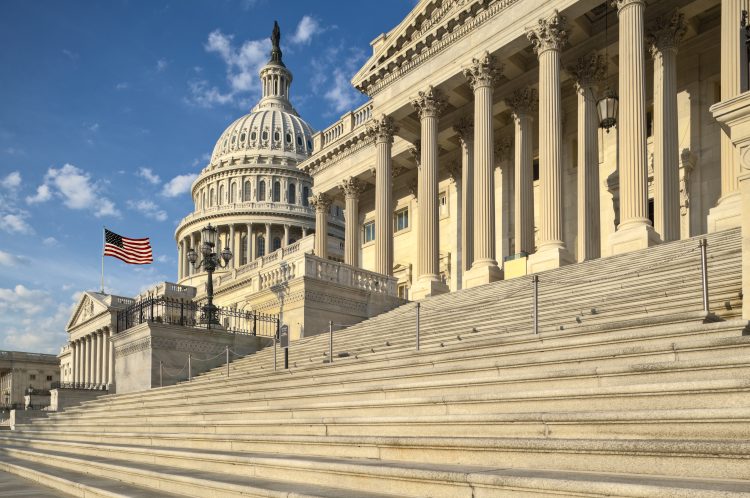This Week on Facing the Future, we look to our future leaders to see how they would put the federal budget on a more sustainable path over the next 30 years. Our guests were college students who competed in the recent Fiscal Challenge, a national competition which culminated last Friday April 8 in Washington DC. Concord Coalition Communications Director Av Harris and I spoke with students from four of the teams to compete in the finals, plus professor Mike Aguilar of the University of North Carolina who started the competition in 2013 and organizes it every year.
Later on in the program, Concord Coalition Policy Director Tori Gorman and I take a look at the latest inflation numbers released this week by the federal Bureau of Labor Statistics showing a sharp increase in the Consumer Price Index. Specifically, the CPI rose 1.2% during the month of March alone. In the last year, consumer prices have risen 8.5%, which is the highest year-to-year increase since 1981.
Rising prices are already leading the Federal Reserve to raise interest rates, which will increase the cost of borrowing. Over time, higher interest rates make the goal of federal budget sustainability even more difficult to achieve because they make servicing the rising national debt more expensive and eat up a larger share of overall federal spending. This is a point not lost on the students competing in the national fiscal challenge.
Professor Aguilar says he wanted to give students a chance to grapple with a real world challenge through experiential learning.
“I started it with the specific mission to enhance students’ understanding of fiscal policy,” said Aguilar. “I put out a call to action to college students around the country and I task them with stabilizing the national debt. The specific goal that they have is the ratio of debt to Gross Domestic Product (GDP). They take the federal debt as a percent of GDP and they use what the Congressional Budget Office uses for their planning horizons, which is a 30-year horizon. So they need to stabilize it over that 30-year horizon. When we started in the academic year, debt was at 98% of GDP. By the 2nd quarter of 2051, they have to figure out a way to get it back to that level, whereas the CBO projections by that period have it closer to 200%.”
Aguilar says that as teams present their strategies for keeping the debt to GDP ratio stable for the next 30 years, they are judged on how much revenue their proposals might bring in, how much savings they might achieve through spending cuts or other federal reforms, how politically feasible their ideas are, and how creatively and cohesively they work as a team. The winning team this year was from Northeastern University in Boston, and team member Aleksei Shilov broke down their strategy.
“Obviously, without increasing revenue or cutting some spending, you can’t really accomplish your goal,” said Shilov. “But what we focused on beyond just balancing the budget was growing the economy and growing GDP itself because that’s really important. So with our plan we improved government efficiency, involving Medicare, Social Security, and some tax increases. The second part was investing in human capital – a lot of infrastructure policies, a lot of digital infrastructure which is really important these days. We had a policy for improving climate infrastructure, there are enormous costs associated with floods, droughts, and things like that. We calculated that we could save quite a bit if our infrastructure is climate resilient.”
Shilov says his team also recommended investing in universal pre-k early childhood education, which they estimated would increase women’s labor force participation, plus make better educated and more productive adults 18 years down the line, both of which would raise GDP.
Other teams also called for federal reforms to boost immigration to add to the workforce and boost economic output. Several teams called for a carbon tax to fund climate infrastructure improvements and renewable energy investments, and a federal Value Added Tax to generate hundreds of billions of dollars annually on consumption. Besides the team from Northeastern, we also heard from teams at the University of Wisconsin, University of North Carolina Wilmington, and Muskingum University in Ohio.
With new numbers showing consumer prices climbing to their highest level in 41 years, Concord Coalition Policy Director Tori Gorman said new complications such as Russia’s invasion of Ukraine have put new inflationary pressures on food and fuel, which have other ripple effects on the economy.
“When you exclude the volatile categories of food and energy, core inflation was up ‘only’ 6.5% in March, and that was largely because of falling prices for used cars,” said Gorman. “Most of the other categories in the core inflation index were up – things like clothing and transportation services. We had good news and bad news when it came to hourly wages. The average hourly wage for the average worker rose by 5.6% compared to a year ago, which is very robust. But when you compare it to prices that are growing at 8.5%, you can see that the average worker is losing purchasing power.”
Gorman says the risk in this scenario is that with diminishing purchasing power, employees may ask for higher wages which – if granted – could push consumer prices even higher. This is what economists refer to as the wage-price spiral, which can be very damaging to an economy and contribute to pushing the United States into a recession. The hope is that the March inflation rate will represent a high-water mark and begin to moderate for the rest of the year.
Hear more on Facing the Future. I host the program each week on WKXL in Concord N.H., and it is also available via podcast. Join me and my guests as we discuss issues relating to national fiscal policy with budget experts, industry leaders, and elected officials. Past broadcasts are available here. You can subscribe to the podcast on Spotify, Pandora, iTunes, Google Podcasts, Stitcher, or with an RSS feed. Follow Facing the Future on Facebook, and watch videos from past episodes on The Concord Coalition YouTube channel.
Continue Reading










